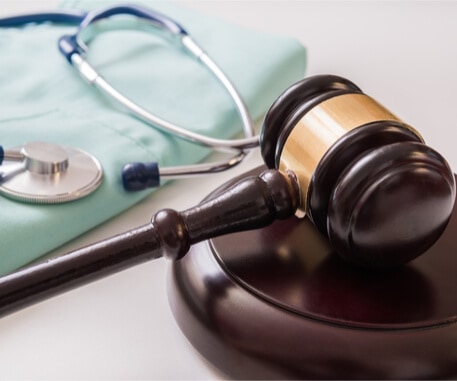Medical malpractice claims are a specialized type of claim dealing with the negligence of health care providers. Medical malpractice claims can vary in the types of injuries, the types of proof, and the types of compensation available, but they generally follow these elements: 1. The medical provider owed you a duty. A duty may take many forms. A few examples are a doctor and patient relationship, receiving emergency medical treatment, or when you’re provided with medication by a pharmacist. It’s important to know what type of relationship a victim has with their provider. A classic case of medical malpractice is one where a victim hires a doctor to perform surgery and the doctor makes errors during the surgery. If you hire a doctor to perform surgery, and that doctor does so, you now have a doctor and patient relationship. Your doctor now owes you a duty to perform the surgery according to a standard of care. In Virginia, the standard of care is that medical practitioners owe a degree of skill and diligence that would be practiced by a “reasonably prudent practitioner” in their field. In other words, the standard of care can be thought of as the amount of skill and degree of care that an average provider in that specialty would give. A medical review panel may be involved in determining what the standard of care was. To prove the duty, your claim will need medical records, receipts, and other documents that show that a medical provider has treated you. To demonstrate a standard of care, a medical malpractice claim needs to show what level of skill and diligence a reasonable practitioner in that specialty would have. This will likely require expert testimony and review by a panel of medical experts. 2. The medical provider was negligent in their duty and did not meet the standard of care. If the medical provider did not meet the standard of care then they have breached their duty. For example, if a doctor does not perform surgery with skill and care equal to, or better than a “reasonably prudent practitioner” then they have breached their duty and may be found to have been negligent. It can be challenging to show what a reasonably prudent practitioner would have done in the circumstances. A claim will likely draw on medical records, witness testimony, and the testimony of medical experts. 3. The medical provider’s negligence caused your injury. It isn’t enough to find out that a doctor was negligent in the performance of duties. That negligence must cause you harm. In a case where a healthy patient goes in for routine surgery, it may be easier to connect the medical practitioner’s negligence and the injury. When the patient is chronically ill or is hurt after treatment, it may be more difficult to find the connection between the practitioner’s negligence and the patient’s injury. To prove this element, expert testimony likely will be required. 4. Damages resulted from your injury. A medical malpractice claim needs to prove that a victim’s injury directly caused damages. For example, a surgical error harms nerves and results in lost sensation, or a doctor fails to diagnosis a condition leading to untreated harmful disease. If the link between injury and damage can be proven, damages can include pain and suffering, medical bills, lost income, and in some cases punitive damages, among others.
Common Types of Medical Malpractice
Medical professionals are people and sometimes people make errors. These errors may be the result of negligence. Despite training, professional certifications, and hospital procedures, accidents still happen. Some of the most common medical malpractice claims include:
Medical Malpractice
Anesthesia uses powerful sedatives and other medications to prepare patients for surgery. Property administered anesthesia can sedate patients and make complex surgeries easier, and safer, for both patients and doctors.
Unfortunately, things can go wrong. Patients can have reactions to common anesthetic medications. Sometimes these reactions are out of the blue, sometimes they result from an anesthesiologist failing to review the patient’s records. Anesthesia can also be over-administered or under-administered by the anesthesiologist, leading to health complications, surgical complications, and even death.
There are many ways for a pregnancy to experience complications. That’s why medical professionals are present. Unfortunately, these professionals sometimes can be the source of harm during child birth. Improper use of tools and techniques may injure the child or the mother.
The doctor may incorrectly use birth assisting technologies such as vacuum methods or forceps when delivering a child. This can result in permanent damage to a child. It’s also possible a doctor fails to correctly monitor a birth for signs that the child is in trouble. If the doctor does not administer the care a child needs, the child could suffer an injury resulting in permanent damage and even death.
There are many ways a child or a mother can be injured during childbirth. A medical malpractice claim may help an injured child and their family get the help they need for their recovery.
We rely upon doctors to give patients the medication that they need, when they need it. We also rely on them to know what medicines will work for patients and what dosage they should take. We count on pharmacists to fill the prescriptions as they are written.
Sadly, medical professionals can accidentally prescribe medication that isn’t right for a patient. Patients can suffer allergic reactions if they’re given a medicine that doesn’t work with their body. Incorrect medications or dosages can have long-term or fatal effects.
Pharmacists may fill prescriptions incorrectly, put medications in the incorrect bottle, and fail to warn patients of side effects and interactions with other medications. Writing and filling prescriptions is a complex process. Things can and do go wrong.
Doctors are expected to improve the health of their patients. However, doctors can miss or misinterpret symptoms when evaluating a patient. They may fail to connect the dots of patient symptoms, or they may see problems that aren’t there. If a doctor misdiagnoses a condition, patients can receive costly and ineffective care that may result in injury. If a doctor fails to diagnose a condition it can go untreated, causing a patient harm.
When we are unable to care for our loved ones, we may rely on a nursing home to provide them the care and treatment they need. We rely on the medical professionals there to give our loved ones the care they need. We also rely upon them to monitor our loved one’s health and to contact other medical personnel when needed. Nursing homes should be a place of comfort and care, but too often neglect and negligence can lead to the injury or death of a loved one.
Surgical errors can cost a victim everything. Long-term injury, complications, and death are all possible. However, these errors are usually preventable. Failure to follow hospital procedure, fatigue, and poor planning for a surgery are only a few of the reasons that things can go wrong. When a patient is injured by a preventable error, a medical malpractice claim can help them secure the compensation they need to recover.

